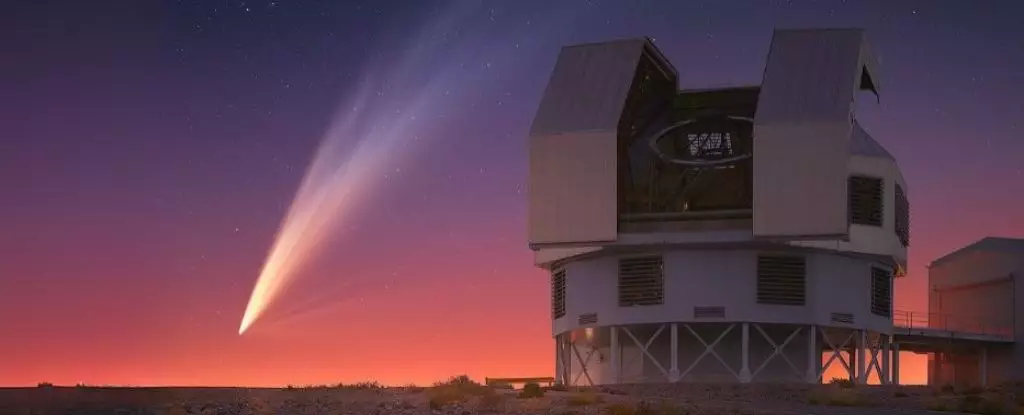Comets have long captivated humanity, inspiring both awe and curiosity as they traverse the vast expanse of our universe. Among these celestial wanderers, Comet C/2024 G3 ATLAS has emerged as an enthralling subject of observation, especially with its anticipated brightness near its perihelion in January 2025. However, the allure of comets is often accompanied by unpredictability: while some dazzle with their brilliance, others fade into obscurity, leaving astronomers and skywatchers alike pondering their fate.
The excitement surrounding G3 ATLAS began on April 25th, 2024, when the Asteroid Terrestrial-impact Last Alert System (ATLAS) survey discovered this new comet under the cloak of darkness. This event sparked significant anticipation, igniting questions about its potential to deliver a celestial spectacle. Historical precedents, such as the ill-fated C/2012 S1 ISON and the triumphant W3 Lovejoy, serve as reminders of the unpredictable nature of these icy bodies, creating a complex tapestry of expectations among enthusiasts.
As G3 ATLAS approached its perihelion—its closest point to the Sun—on January 13, 2025, it traversed a perilous path, reaching just 14 million kilometers from our star. This proximity increased the risks significantly; comets face the monumental challenge of surviving extreme solar radiation and the intense heat that accompanies such journeys. The SOHO spacecraft’s LASCO C3 camera managed to capture dazzling imagery of G3 ATLAS, highlighting its maximum brightness of -3.8 magnitude—a sight reminiscent of the remarkable P1 McNaught in 2007.
Unfortunately, the trajectory of G3 ATLAS also revealed a common theme in cometary behavior. Although it graced the skies with its presence, a fortuitous opportunity for observers in the northern hemisphere was elusive, as the comet predominantly favored a southern circuit. For only a brief window from January 8th to January 15th did it make itself known above the celestial ecliptic, a pattern that seems all too familiar with bright comets tending to favor southern latitudes.
The celestial allure of G3 ATLAS persisted as its journey continued, unfurling a stunning dust tail that mesmerized observers. Astrophotographers were treated to incredible imagery, capturing the comet’s striking visual phase even as it became more challenging to spot. The remarkable phenomenon of syndynes—dusty streaks that manifested as G3 ATLAS traveled through the cosmos—produced a spectacle for those fortunate enough to witness it against the dusk horizon.
However, the joy of observing a bright comet is often tempered by the harsh realities of their transient existence. In a dramatic twist, by January 18th, images revealed that G3 ATLAS had entered a troubling phase, becoming what observers termed a ‘headless comet.’ The diminishing brightness of its nucleus and its unnaturally radiant tail presented a curious juxtaposition, leading to discussions among astronomers regarding the underlying factors contributing to such transformations.
Currently, G3 ATLAS shines at a fading +5th magnitude, located in the constellation Piscis Austrinus. With an estimated orbit of 160,000 years falling into the inner solar system, G3 ATLAS is thought to venture back out into the depths of space on a 600,000-year round trip. The remnants of this comet, after it fades away, may one day return, offering a fresh opportunity for future generations to ponder its cosmic journey.
As we observe the ceaseless motion of celestial bodies, the fate of G3 ATLAS reminds us of the thrilling yet unpredictable nature of observing comets. The beauty of the cosmos lies not only in its phenomena but also in the stories they create, bridging the gap between science and wonder. Those captivated by G3 ATLAS should not only relish the fleeting views but also remain instilled with the hope of future cometary visits, holding onto the belief that the universe still has countless secrets waiting to be unveiled in its grand celestial ballet.


Leave a Reply